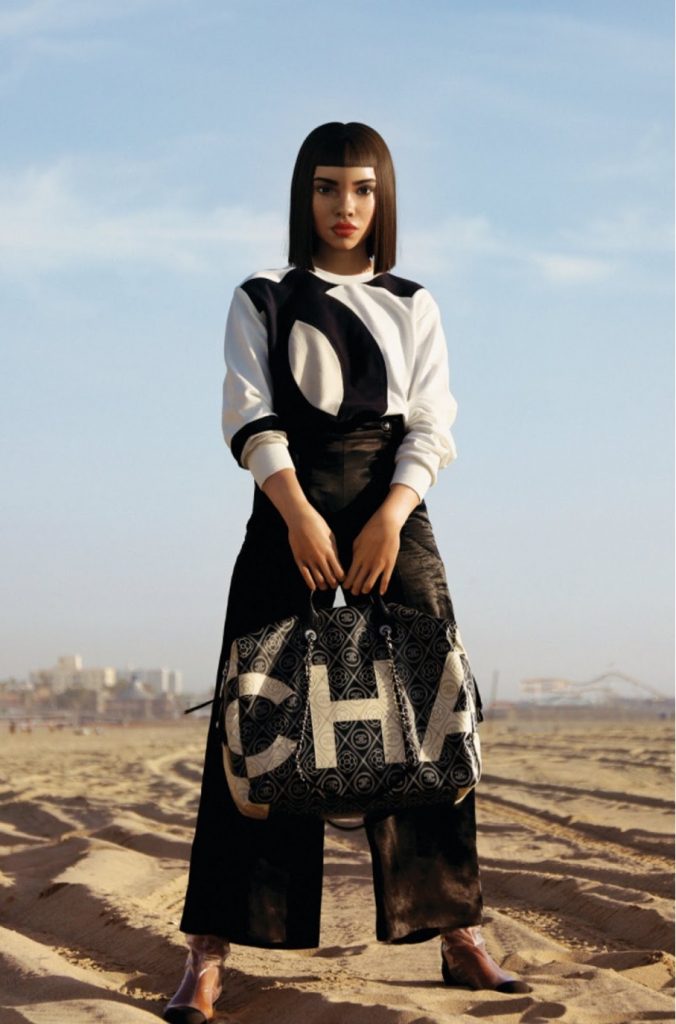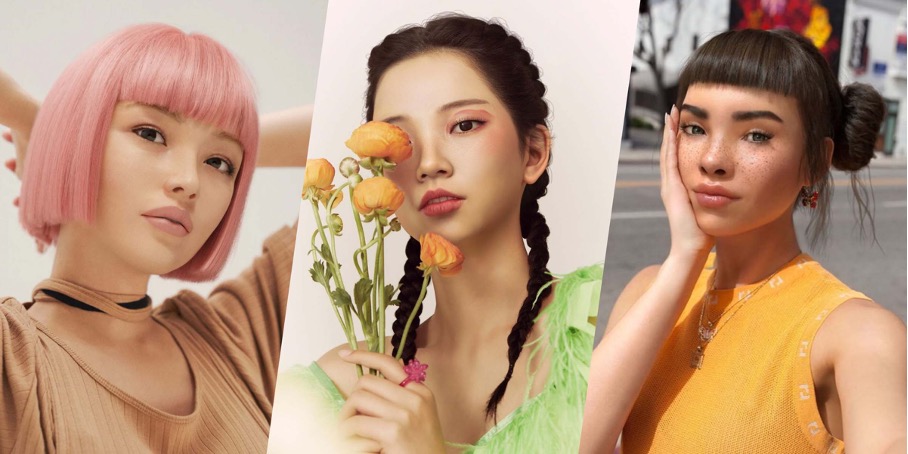The abbreviation “AI” (artificial intelligence) is no longer new. It is becoming increasingly familiar and influential as an emerging technology across various industries. Even in the fashion industry, it is gaining popularity, growing, and continuously evolving. The global AI in the fashion industry reached 1.58 billion USD, and it is estimated to increase to 49.07 billion USD by 2033, with a compound annual growth rate of 41% from 2024 to 2033 (Precedence Research, 2024).
Traditionally, fashion trends were predicted by analyzing data from various sources such as social media, fashion blogs, online retail sites, and even global fashion events. Today’s fashion businesses are using AI tools to generate trends. These tools can generate an enormous amount of data from social media, e-commerce platforms, and fashion blogs. For instance, brands like Burberry now use AI to analyze social media data (Plahonina, 2024). Furthermore, AI can leverage algorithms to analyze historical data and identify trends such as current popular themes, colors, and patterns in the fashion industry. Another great benefit of AI is that it can analyze consumer behavior and segment the market based on demographics. It can also understand what is successful in the market and how competitors are performing (Christou, 2024).
Besides being used internally, AI also has an external impact. AI influencers are becoming a disruptive force in the fashion industry. The global virtual influencer market size was estimated at 4.58 billion USD in 2023, and it is estimated to grow at a compound annual growth rate of 38.9% from 2024 to 2030 (Virtual Influencer Market Size &Amp; Outlook, 2030, 2024). Characters are created and powered by artificial intelligence. These AI influencers are programmed with personalities and behaviors that align with brand identities. Influencers nowadays can represent the perfect picture of beauty standards. It becomes easier for brands since they can prepare marketing campaigns tailored 100% to the brand’s needs. Furthermore, AI influencers can provide 24/7 service because they do not have the limitations of humans, which means they can perform tasks that real people need to do during the day (Baukh, 2024). Bigger brands such as Chanel, Alexander McQueen, Prada, and more already use AI influencers to promote their brands. You may know Lil Miquela, a virtual influencer with more than 2.5 million followers on Instagram.

AI influencer Lil Miquela posing for Chanel, 2018.
However, there are also challenges. Since AI relies heavily on data patterns, it may lack the creativity and originality that human influencers bring, making campaigns feel repetitive or too predictable. Additionally, if reviews are given by AI influencers, is the information actually useful? Since it could be tailored to what companies want, leading to a lack of transparency (Capital Advertising, 2024).
AI can no longer be ignored in the fashion industry, as it comes with both advantages and disadvantages. But looking ahead, will human influencers be replaced by AI influencers? Will the fashion industry become too dependent on AI?
References:
Baukh, O. (2024, September 13). How Artificial Intelligence is Revolutionizing the Fashion Industry. Techpacker Blog. https://techpacker.com/blog/design/how-artificial-intelligence-is-revolutionizing-the-fashion-industry/
Capital Advertising (2024, May 23). The rise of AI influencers – Capital Advertising. Capital Advertising. https://capitaladvertising.nl/en/blogs/ai-influencers
Christou, L. (2024, July 15). Artificial Intelligence in Fashion: Reshaping the Entire Industry. 3DLOOK. https://3dlook.ai/content-hub/artificial-intelligence-in-fashion/
Plahonina, M. (2024, July 17). How known brands are using AI models to revolutionize fashion | REVERB. REVERB | Full Service Marketing. https://reverbico.com/blog/how-known-brands-are-using-ai-models-to-revolutionize-fashion/#:~:text=Burberry%20uses%20AI%20to%20analyze,create%20more%20targeted%20marketing%20campaigns.
Precedence Research. (2024, February 23). AI in Fashion Market Size to Hit USD 49.07 Billion by 2033. https://www.precedenceresearch.com/ai-in-fashion-market
Virtual Influencer Market Size & Outlook, 2030. (2024, August 28). https://grandviewresearch.com/horizon/outlook/virtual-influencer-market-size/global


Very interesting blog! I find it really fascinating how fashion companies use AI to analyze (social media & historical) data to predict the next trends. I think that from a business perspective this could be very cost affective.
However, in your blog you also mention the use of AI influencers. It can be very helpful for companies to markter specific type of consumer segment, and also helps creating and communicatie a valuable brand identity. Although it has multiple positive impacts (especially for the companies that use them) I think there is also a downside to this, because the companies that use the AI influencers can develop an influencer that represents the perfect picture of beauty standards for their brand’s identity. For young children and young adults this can give a distorted picture, as it is not real, but they are influenced by seeing these “perfect” posts. It is common knowledge that the use of social media causes people to compare themselves with these social media accounts, which can lead to an unrealistic self-image. Social media can lead to anxiety and depression for several reasons (McLean, 2024), including people comparing themselves to others, fear of missing out and craving positive feedback. With the arrival of an even more unrealistic image on social media, using AI and therefore fictional people, I think that this new development could lead to even more mental health issues and that this method of marketing must therefore be handled with caution.
Reference:
McLean Hospital. (2024, March 29). The Social Dilemma: Social Media and Your Mental Health. McLean Hospital. https://www.mcleanhospital.org/essential/it-or-not-social-medias-affecting-your-mental-health